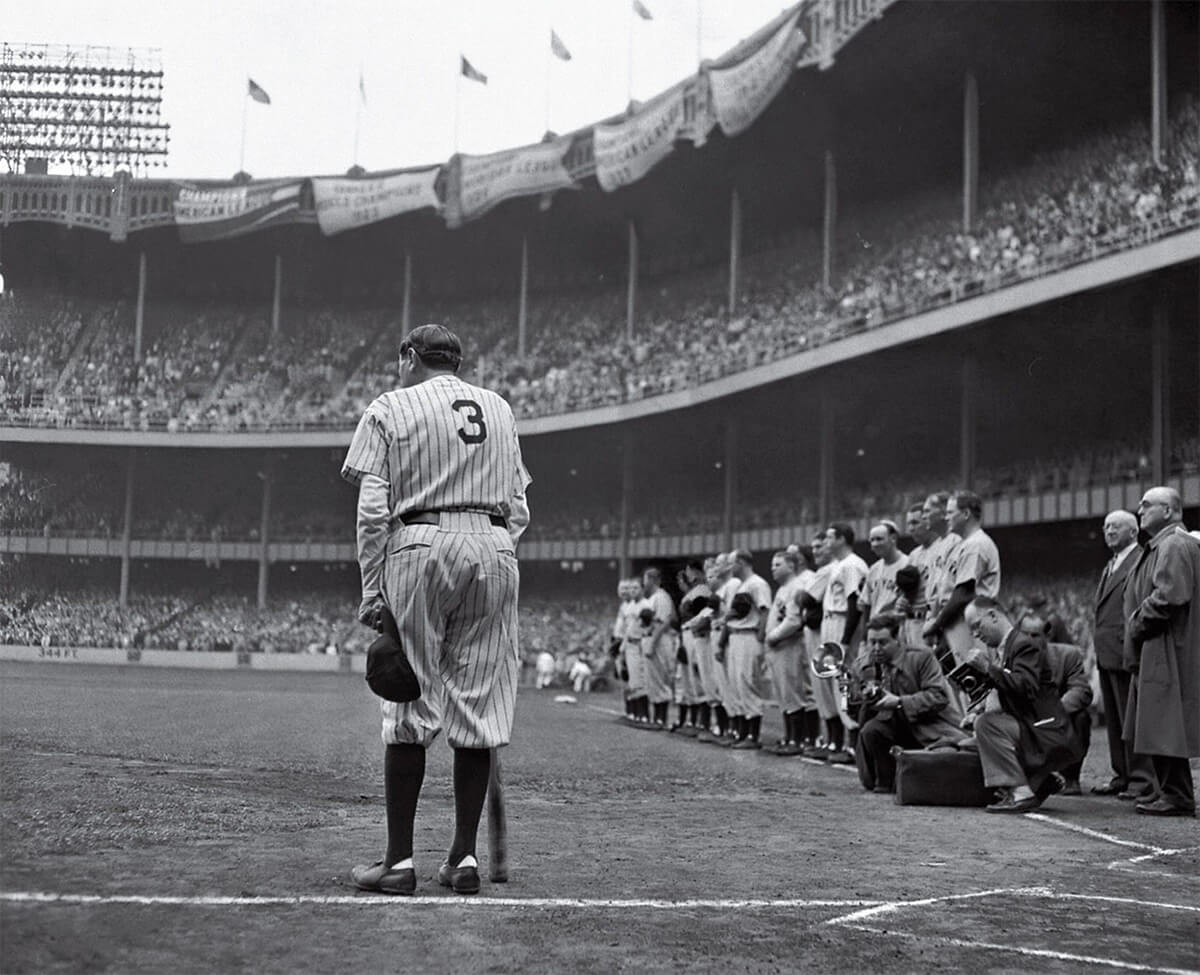Nathaniel Fein (August 7, 1914 – September 26, 2000) was a photographer for the
New York Herald Tribune for 33 years. Fein is known for photographing Babe Ruth towards the end of his life, winning the 1949
Pulitzer Prize for his photograph
The Babe Bows Out.
Fein was born and raised on the Lower East Side of Manhattan. He was a press photographer at the New York Herald Tribune from 1933 to 1966. Known for setting a scene correctly, he would climb buildings and bridges to get the shot he was after. Fein's main subject matter was New York following World War II. Albert Einstein, Ty Cobb, Queen Elizabeth and Harry S. Truman were among the many public figures that he photographed. Nat Fein won more press photo awards than any of his contemporaries. Although considered to be one of the greatest human interest photographers in journalism, he carried the distinction of having taken
"the most celebrated photograph in sports history." -- The New York Times, 1992.
A resident of Tappan, New York, Fein died on September 26, 2000, at the age of 86.
Source: Wikipedia

Babe Bows Out", photograph of Babe Ruth during a ceremony at Yankee Stadium to retire his number, 13 June 1948 (This photo won the 1949 Pulitzer Prize for photography) © Nat Fein / Public Domain
Babe Ruth’s dominating influence changed the game itself. He became the face of the New York Yankees and embodied the ethos of the game of baseball, American sports culture, and New York heritage. In Babe Bows Out photographer Nat Fein captures the beloved athlete and showman in an image that has become synonymous with the immensity of its subject.
Nat Fein began to work for the New York Herald Tribune as a copyboy in 1932. After investing in a camera years later, he became a press photographer for the paper, creating a working relationship that lasted 33 years. While working as a staff photographer at the Tribune, Fein had not been assigned to work on the day that the New York Yankee’s would retire Babe Ruth’s number three jersey. On the day when the Yankees would celebrate the 25th anniversary of the Yankee stadium and retire “The Great Bambino’s” number, the mainstay sports photographer for the Tribune called in sick. Thus, on June 13 of 1948, Nat Fein was set out to cover what many suspected could be Babe Ruth’s last public appearance.
While other press photographers attempted to capture a portrait of the great American baseball hero wearing his uniform one last time, Nat Fein, tried to capture the iconic number on his jersey, stating:
“All the photographers were in the front, and I wanted to see how he looks from the back. So I figured, well, number three is out. The Babe bows out…” – Nat Fein
The final image is filled with emotion, a bidding farewell to the greatest player in baseball. Among an interminable crowd of onlookers and accompanied by current Yankees players, Ruth bows out in the stage where his legendary mythology was created. At the time of the photograph in 1948, Babe Ruth had not played for the Yankees for over a decade. Ruth had also been ill for some time, and his appearance had changed; his thin legs and face showed signs of his fragile condition. Fein’s photograph, instead of highlighting the aged features of the passing of time or sickness, captures the silhouette of the baseball giant. The picture presenting Ruth with his classic number three jersey underlines the monumental influence he exuded over the game and New York. The image not only symbolizes a sports hero but a man who was larger than life. His rough childhood with frequent visits to orphanages and hospitals, his kindness to black baseball players in a time of racial inequity, his fondness to volunteer his time for kids sick with Polio, and his larger physique, generate empathy in his farewell photograph. The photograph presents a poetic image that connects us through its resounding human and empathetic quality, connecting the viewer to an unwavering American hero.
Babe Bows Out eventually became the first sports photograph to win the Pulitzer Prize. It cemented the importance of the medium of photography. It is considered one of
Time Magazine’s 100 most influential images of all time and is featured in the National Baseball Hall of Fame and the
Smithsonian Institute.
Never surrendering to sickness or ill-health, the photograph commemorates the hometown hero. It immortalizes the strong and imposing Babe Ruth as the towering figure we remember and speak of today. A man whose recognition has reigned supreme over baseball, New York, and the world of sports for over 100 years. Nat Fein’s Babe Bows Out is one of the most excellent images of baseball lore.
Source: Holden Luntz Gallery
